In the face of the COVID-19 pandemic, EST scientists and engineers could not take the streets, but they nevertheless found ways to share their passion online.
The COVID-19 pandemic has undoubtedly conditioned all cultural activities in the continent. With museums, conference centres, and even bars closed (no Pint of Science this year), EST researchers and engineers had to turn to the Internet to keep sharing their investigations and results.
The European Researcher’s Night 2020 is a case in point. Celebrated on Friday, November 27, all activities were online. In Granada (Spain), Dr Luis Bellot explained the role of magnetic fields in the Sun and the importance of EST to understand them in a short talk released on YouTube and organised by the Instituto de Astrofísica de Andalucía-CSIC and Fundación Descubre.
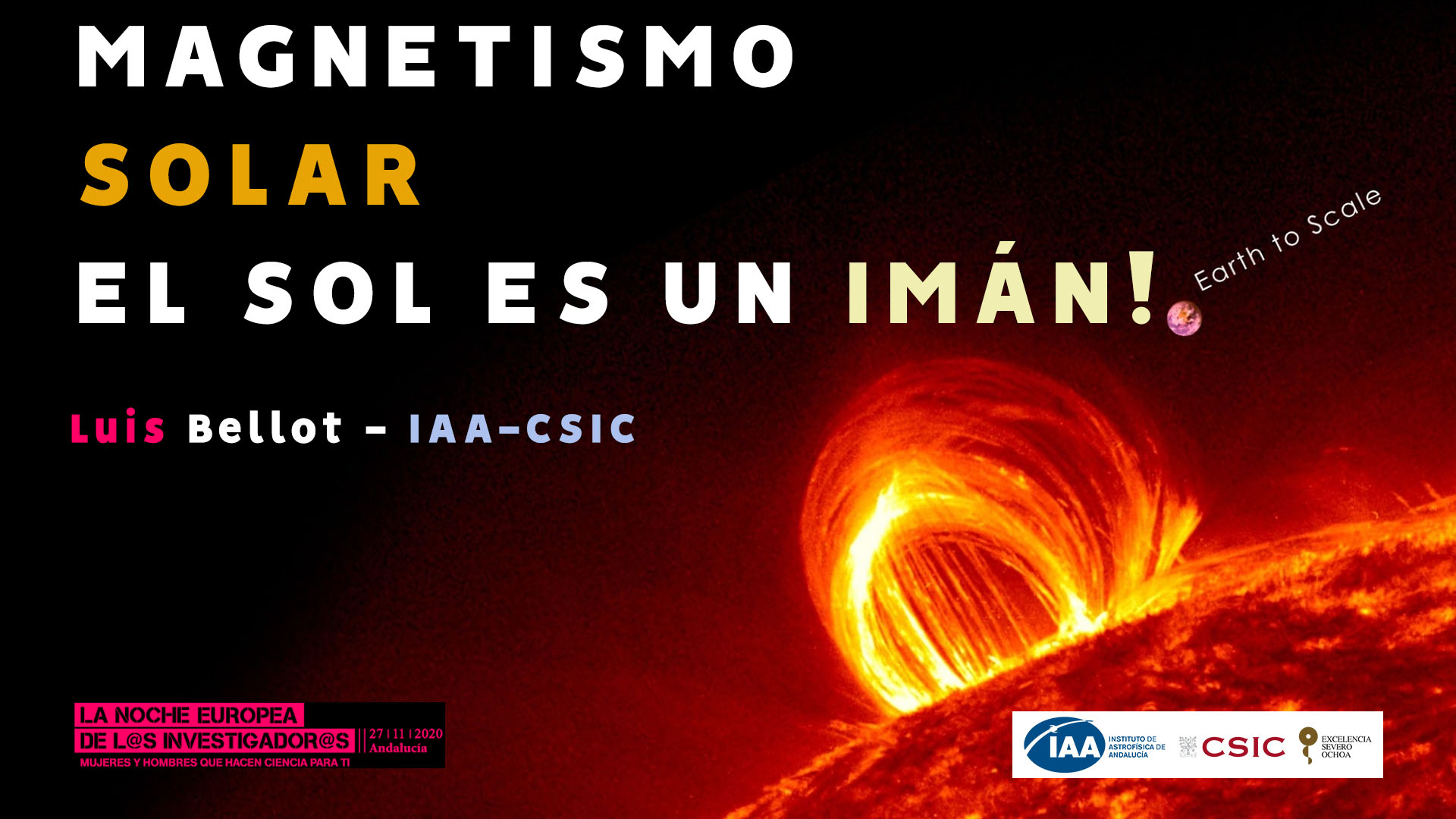 Dr Luis Bellot (IAA-CSIC) explained the role of solar magnetic fields in a video
Dr Luis Bellot (IAA-CSIC) explained the role of solar magnetic fields in a video
In Portugal, researchers from the Geophysical and Astronomical Observatory of the University of Coimbra organised an online live round table about the mysteries of the Sun. Drs Teresa Barata, Nuno Peixinho, Ricardo Gafeira and João Fernandes explained how scientists try to unveil them with the help of instruments like the future European Solar Telescope. They answered questions from the public.
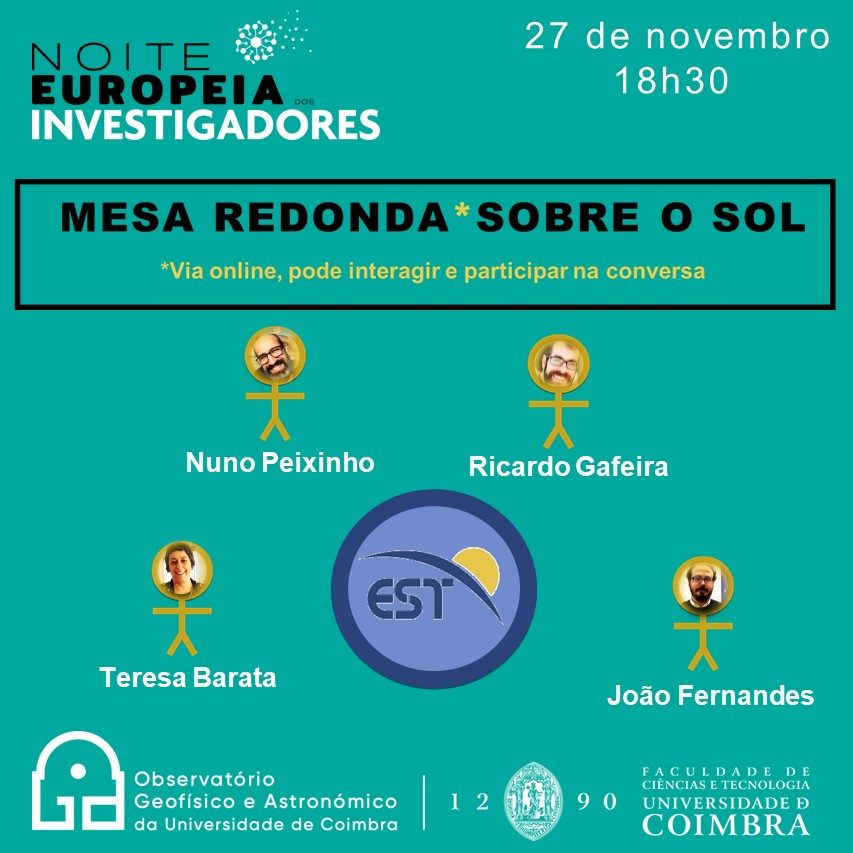 Online round table by scientists from Universidade de Coimbra (Portugal)
Online round table by scientists from Universidade de Coimbra (Portugal)
Also live was the event organised by the Trinity College Dublin (Ireland) in which scientists shared their topics with the public. Our colleague Dr. Sophie Murray was there to talk about the study of the Sun and the astrophysics research done by Irish institutions.
Italy loves the Internet
But it was Italy who turned to Internet the most: not less than seven online activities, including a virtual tour to the laboratories at the Physics Department of Università di Roma Tor Vergata (that can still be viewed online).
Prof Francesco Berrilli, from Università di Roma Tor Vergata, debunked myths linking the Sun and global warming and gave an overview on its actual role in Earth’s climate in an live talk that can still be watched online. In turn, Prof Francesca Zuccarello from Università di Catania participated in a round table about the Sun and its role as a source of renewable energy organised by the Osservatorio Astrofisico di Catania and available on its YouTube channel.
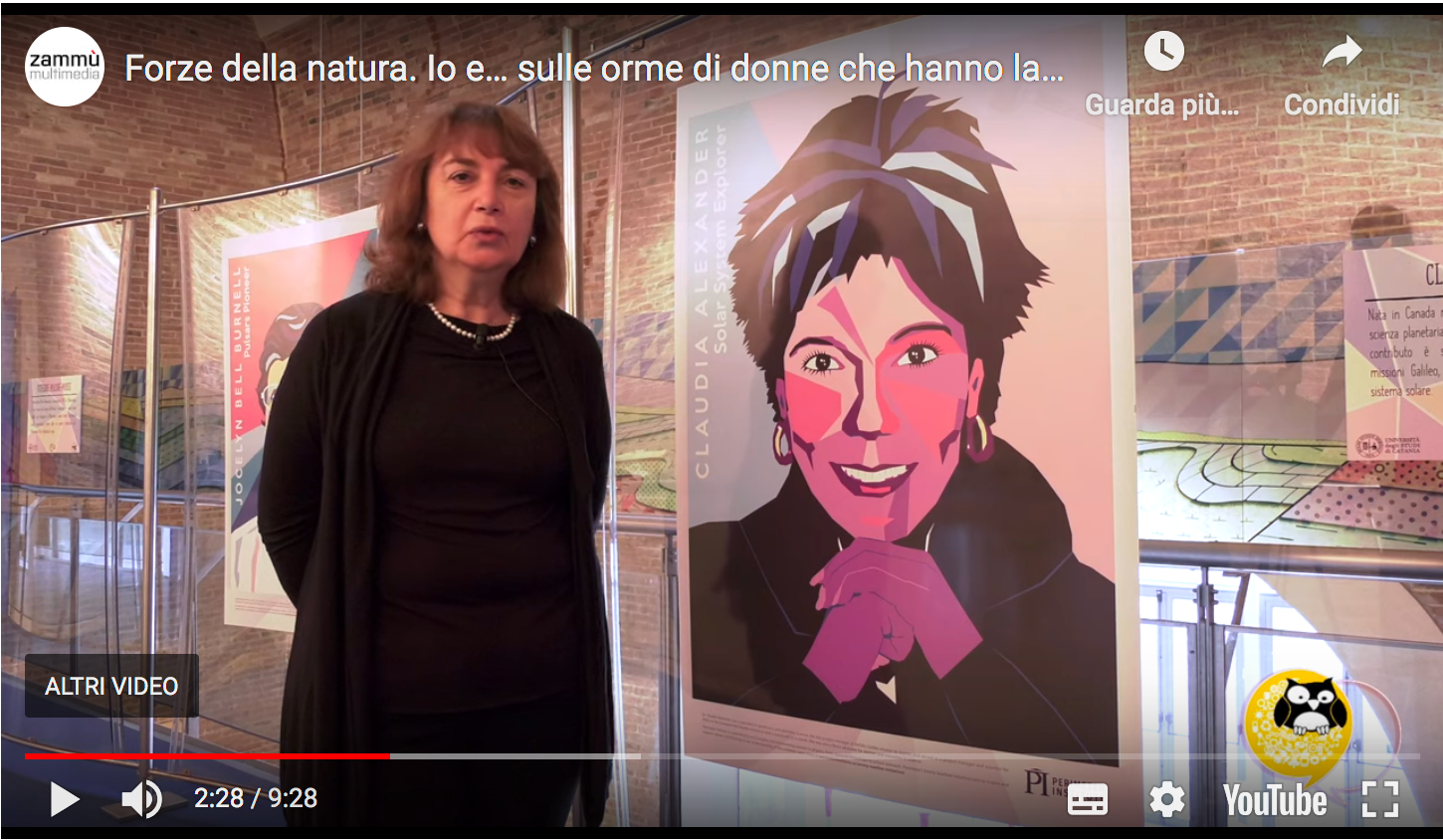 Interview with Prof Francesca Zuccarello from Università di Catania
Interview with Prof Francesca Zuccarello from Università di Catania
Two other online seminars were held by INAF institutions: a 45-minute conference on Sun-Earth relations, 24/7 observations, and solar instruments (including IBIS 2.0), by Osservatorio Astronomico di Roma (INAF-OAR), and a two-hour overview on current research in Astrophysics, by INAF-OACT.
Other researchers chose to share not only their investigations but their experience as scientists. For example, Dr Luca Giovannelli participated in #ScienzaInsieme with a video summarising his research journey and his role in EST. Drs Ilaria Ermolli and Mariarita Murabito (also from INAF-Osservatorio Astronomico di Roma) participated in a live event in which female astronomers shared their research topics and experiences with the public.
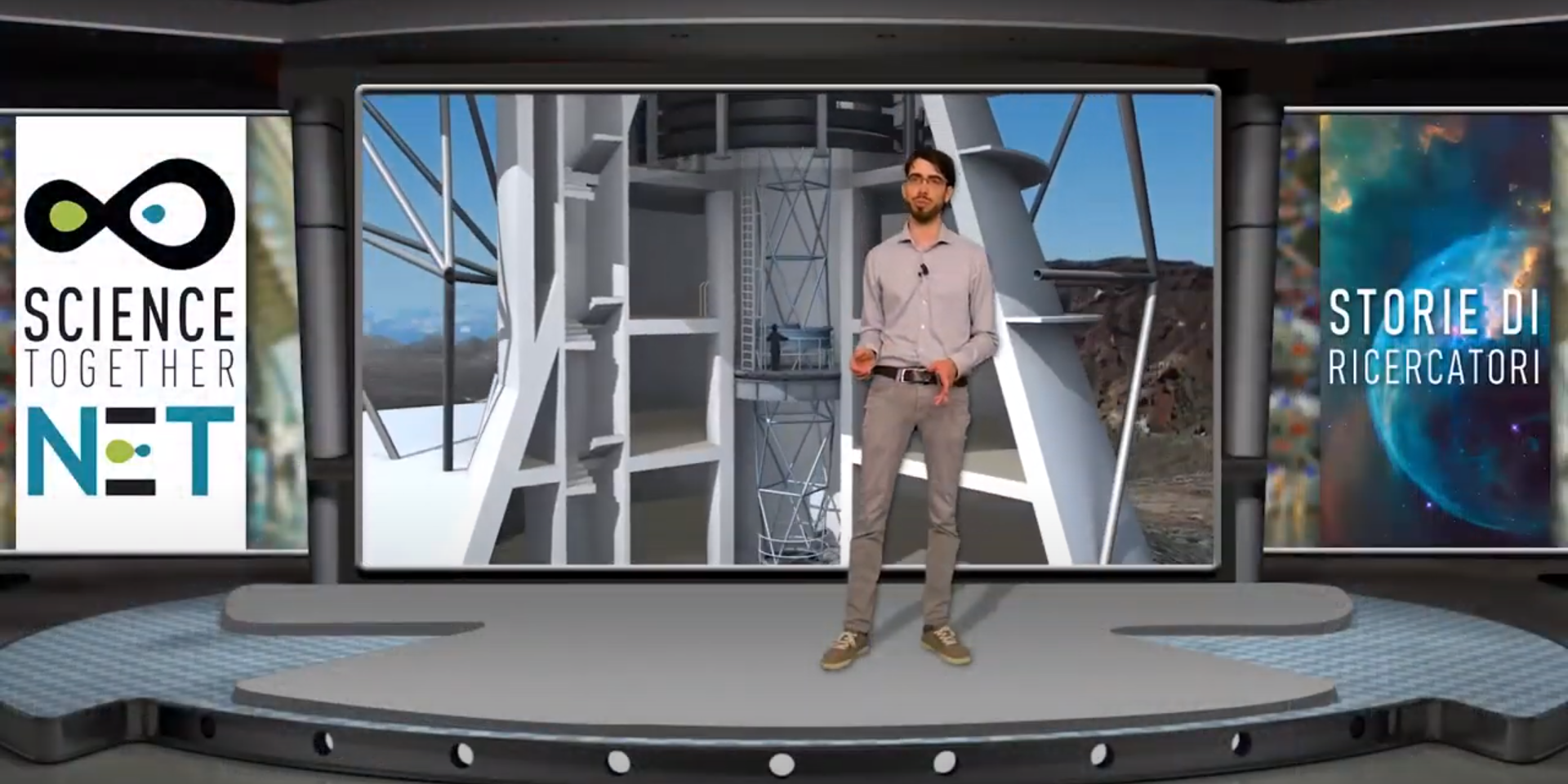 Dr Luca Giovannelli (Università di Roma Tor Vergata), talking about EST in the ERN 2020
Dr Luca Giovannelli (Università di Roma Tor Vergata), talking about EST in the ERN 2020
Activities in the real world
However, not all activities were online. Some lucky ones in Gyula (Hungary) coud participate in the Astronomical Days at Almásy Castle. About 300 visitors had the opportunity to observe the sky with binoculars and participate in lectures about space weather, solar energy and how scientists study the Sun (including a presentation of the EST project). Drs Robertus Erdelyi, Bernadett Belucz, and Marianna Korsós actively engaged with participants and answered their questions.
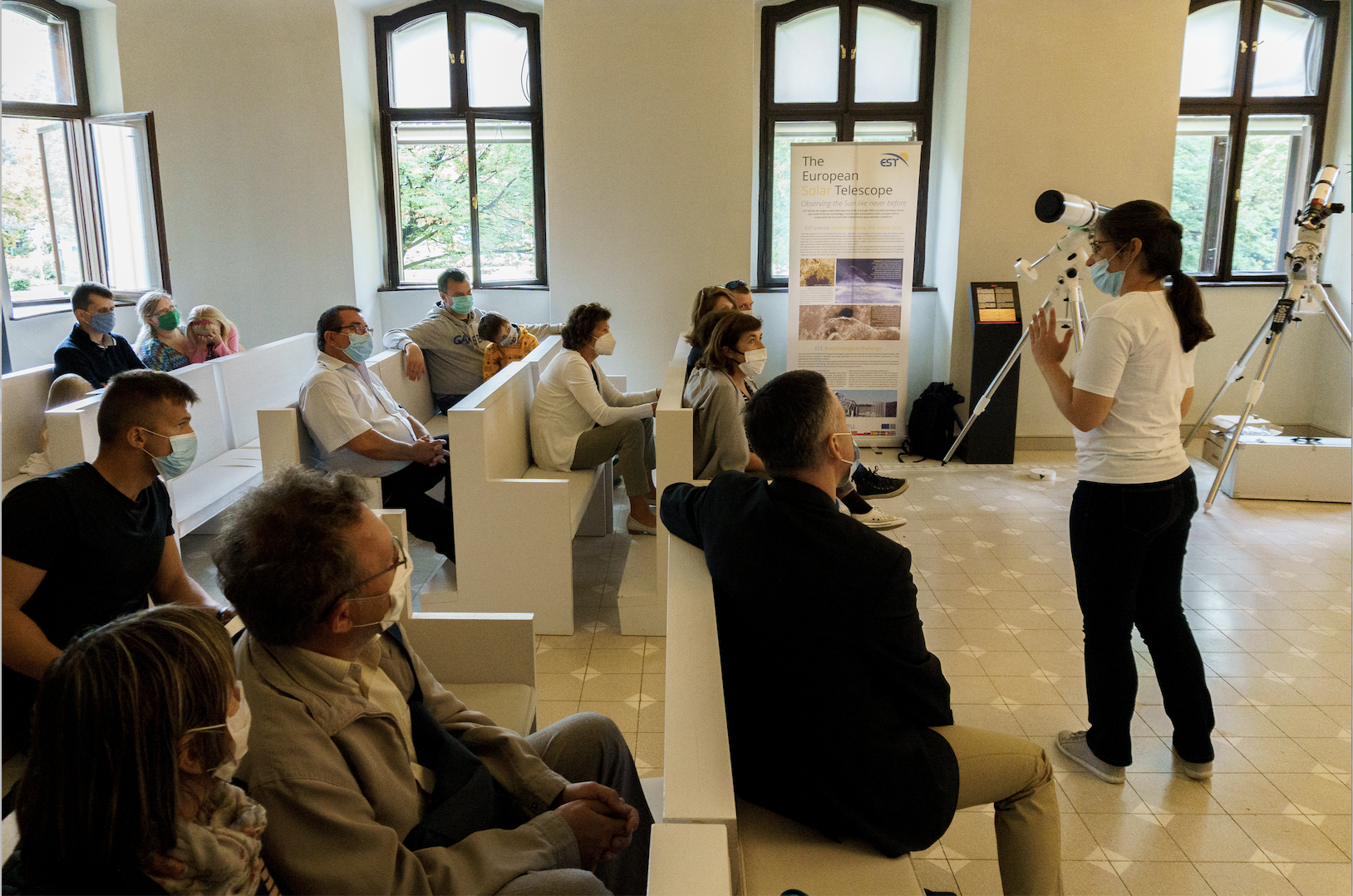 Dr Marianna Korsós (ELTE) giving a presentation at the Gyulia Astronomical Days
Dr Marianna Korsós (ELTE) giving a presentation at the Gyulia Astronomical Days
The lockdown also allowed EST scientists and other researchers to write articles for popular magazines, as Dr Gianni Mainella (Telescopio Nazionale Galileo), who prepared an article for Il Carabiniere about the facilities at Observatorio del Roque de los Muchachos (La Palma) and EST.
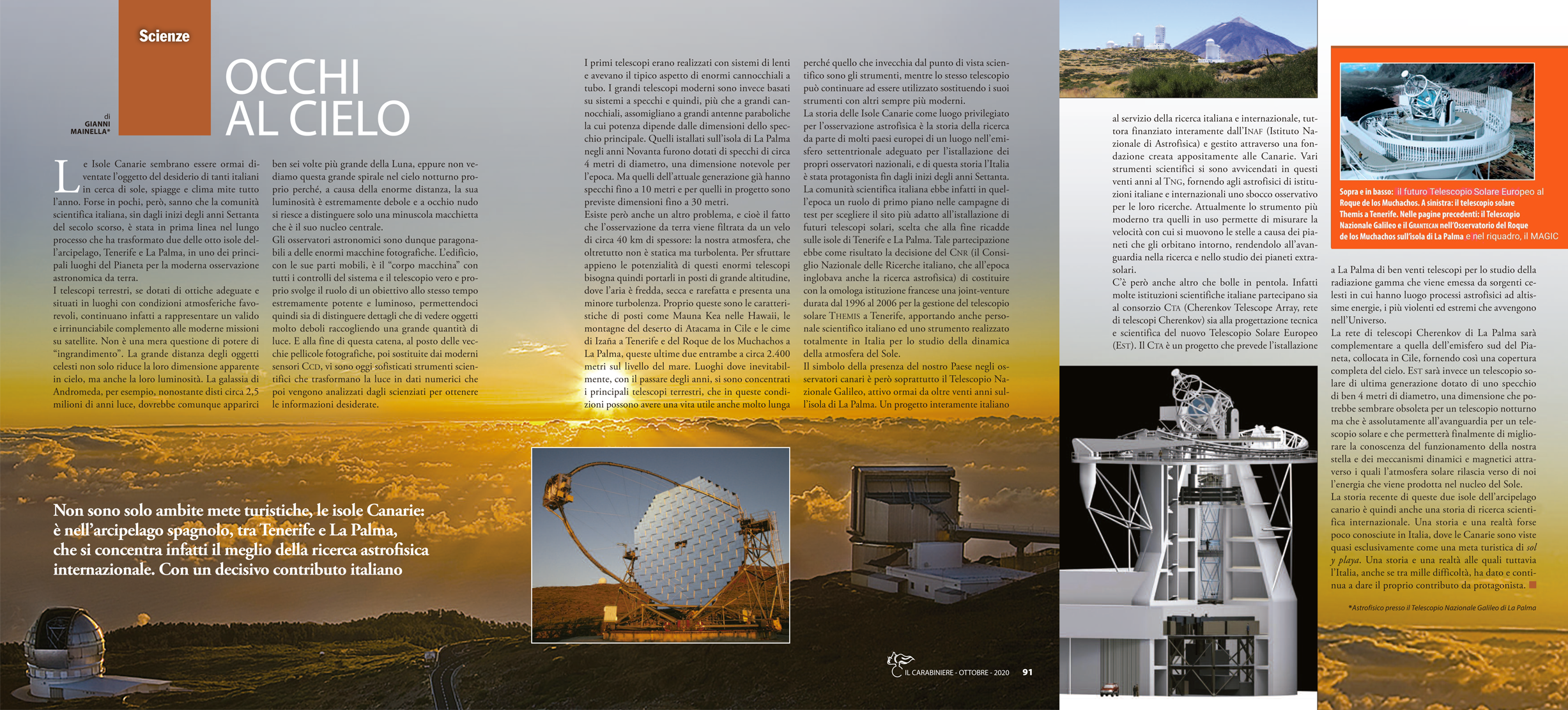 "Occhi al Cielo" by Dr Gianni Mainella (TNG) for the Il Carabiniere magazine
"Occhi al Cielo" by Dr Gianni Mainella (TNG) for the Il Carabiniere magazine
